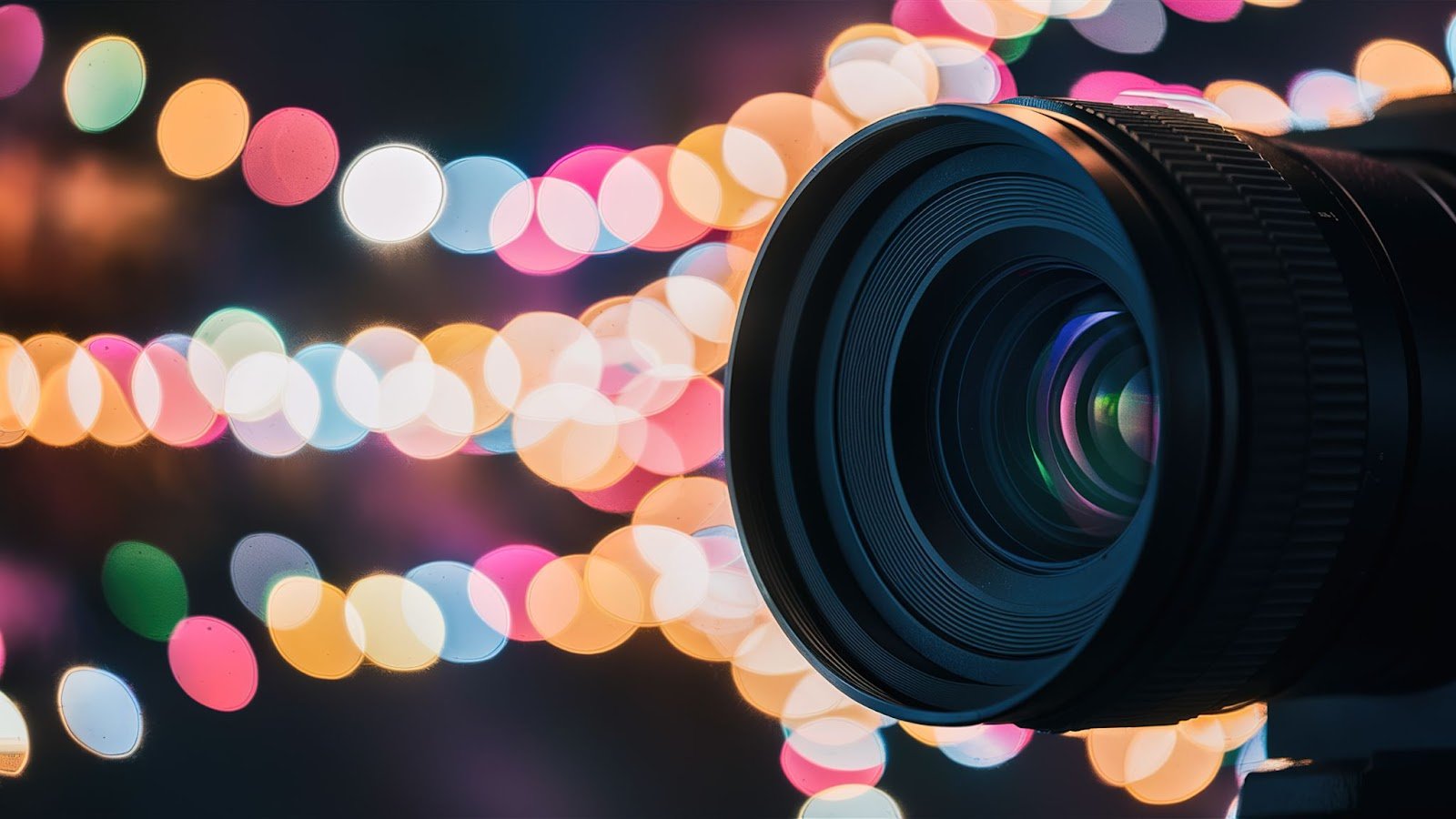Unsplash, Pexels, and Pixabay offer high-resolution images for commercial use for free. These sites provide diverse and high-quality images.
High-resolution images are essential for various commercial projects, including websites, marketing materials, and social media. Unsplash, Pexels, and Pixabay are popular platforms offering a vast collection of free images. These platforms ensure that users can find unique and professional-quality visuals without worrying about copyright issues.
Each site features easy-to-navigate search functions, making it simple to find the perfect image for any project. Businesses and creators can significantly benefit from these resources, enhancing the visual appeal of their work. Utilizing these free high-resolution images helps maintain a professional and polished look, crucial in today’s competitive market.

Introduction To Free Images
In the digital world, images are essential for websites, blogs, and social media. Finding high-resolution images for commercial use without spending a fortune can be challenging. This is where free images come into play. Free high-resolution images offer a solution to businesses, bloggers, and creators who need quality visuals without the hefty price tag. Let’s explore the world of free images and understand their importance.
Benefits Of Free Images
Free images come with several advantages that make them a valuable resource for content creators. Here are some key benefits:
- Cost-Effective: Free images save money, especially for small businesses and startups with limited budgets.
- High Quality: Many platforms offer high-resolution images that ensure your content looks professional.
- Variety: A wide range of categories and styles are available, catering to different needs and preferences.
- Time-Saving: Easily accessible, free images save time that would otherwise be spent on creating or purchasing visuals.
Here’s a quick comparison table to highlight the benefits of free images:
| Benefit | Description |
|---|---|
| Cost-Effective | No need to purchase or subscribe to premium image services. |
| High Quality | Access to professional-grade, high-resolution images. |
| Variety | Images available in various categories and styles. |
| Time-Saving | Quick access to a vast library of images. |
Types Of Free Image Licenses
Understanding the types of licenses for free images is crucial to ensure proper usage and avoid legal issues. Here are some common types:
- Public Domain: These images are free for personal and commercial use without any restrictions. Examples include works that are very old or explicitly placed in the public domain by their creators.
- Creative Commons Zero (CC0): Images under this license can be used for any purpose without attribution. This is the most flexible license, offering maximum freedom.
- Creative Commons Attribution (CC BY): These images can be used freely, but you must give credit to the original creator. It’s essential to follow the attribution guidelines provided.
- Creative Commons Non-Commercial (CC NC): These images can be used for free, but only for non-commercial purposes. Commercial use requires additional permissions from the creator.
Here’s a table summarizing the different types of free image licenses:
| License Type | Usage Rights |
|---|---|
| Public Domain | Free for personal and commercial use without restrictions. |
| Creative Commons Zero (CC0) | Free for any purpose without attribution. |
| Creative Commons Attribution (CC BY) | Free to use with mandatory credit to the creator. |
| Creative Commons Non-Commercial (CC NC) | Free for non-commercial use only; commercial use requires permission. |
Top Sources For Free Images
Finding free high-resolution images for commercial use can save your business time and money. These images enhance your projects, websites, and marketing materials without breaking the bank. In this blog post, we will explore the top sources for free images, ensuring you always have high-quality visuals at your fingertips.
Popular Websites
Several websites provide a vast collection of free high-res images for commercial use. These platforms are user-friendly and offer a wide range of categories, ensuring you find the perfect image for any project.
- Pixabay: With over 1.7 million free stock photos, Pixabay is a favorite among marketers. It offers a simple search function and high-quality images.
- Unsplash: Unsplash is known for its stunning, artistic photos. It features thousands of contributors, ensuring a diverse collection.
- Pexels: Pexels provides both photos and videos. Its curated collections make it easy to find the right image for any need.
- StockSnap.io: This platform offers a user-friendly interface and a huge selection of high-resolution images. New photos are added weekly.
Here is a comparison table for quick reference:
| Website | Number of Images | Special Features |
|---|---|---|
| Pixabay | 1.7 million+ | Vectors, illustrations, videos |
| Unsplash | Thousands | Artistic, high-quality photos |
| Pexels | Thousands | Curated collections, videos |
| StockSnap.io | Thousands | Weekly updates, trending images |
Niche Platforms
While popular websites offer a broad range of images, niche platforms cater to specific needs. These platforms provide specialized content, ensuring you find unique and relevant images.
- FoodiesFeed: Perfect for food bloggers and restaurateurs, FoodiesFeed offers high-res food images. The photos are both appetizing and professional.
- Reshot: Ideal for startups and freelancers, Reshot provides a fresh collection of handpicked photos. It focuses on non-stocky images for creative projects.
- Gratisography: Known for quirky and whimsical images, Gratisography offers unique visuals. It’s perfect for adding a touch of fun to your projects.
- Picjumbo: Picjumbo features a variety of categories, including fashion, nature, and technology. It’s great for finding niche-specific images.
Here is a comparison table for quick reference:
| Platform | Specialty | Unique Features |
|---|---|---|
| FoodiesFeed | Food images | High-res, appetizing photos |
| Reshot | Creative projects | Handpicked, non-stocky images |
| Gratisography | Quirky images | Fun, whimsical visuals |
| Picjumbo | Various categories | Fashion, nature, technology |
Quality Vs. Quantity
Finding free high-res images for commercial use can be a daunting task. The debate of quality vs. quantity often arises. You may have access to thousands of images, but not all will meet the standards required for professional use. It’s essential to balance both aspects to ensure your content stands out.
Finding High Res Images
Searching for high-res images requires a strategic approach. Start by exploring well-known websites dedicated to free images.
- Unsplash: Offers a vast library of high-quality images contributed by photographers.
- Pexels: Features a diverse collection of images, including stock photos and videos.
- Pixabay: Provides over 1.7 million images and videos free for commercial use.
Use specific keywords to refine your search. Look for images that fit your brand’s aesthetic and message. Some tips for finding the best images:
- Use Filters: Narrow down your search by resolution, orientation, and color.
- Check Licensing: Ensure the images are free for commercial use and do not require attribution.
- Read Reviews: Some websites allow users to review images. Use this feature to gauge quality.
These strategies help in efficiently finding high-res images that suit your needs.
Evaluating Image Quality
Not all high-res images are created equal. Evaluating image quality is crucial for maintaining a professional look.
Here are some factors to consider:
- Resolution: Images should be at least 300 DPI for print and 72 DPI for web use.
- Clarity: Ensure the image is sharp and free of noise or grain.
- Composition: Check the image’s framing, balance, and focal points.
A high-quality image enhances your content’s visual appeal. Here is a quick table to summarize key quality indicators:
| Quality Indicator | Description |
|---|---|
| Resolution | 300 DPI for print, 72 DPI for web |
| Clarity | Sharp, no noise or grain |
| Composition | Well-framed, balanced, clear focal points |
Evaluating these factors ensures your chosen images will meet professional standards.
Legal Considerations
Using free high-res images for commercial use sounds like a dream. But it’s crucial to understand the legal considerations before you use them. Ignoring these could lead to serious consequences. Let’s dive into the legal aspects of using these images.
Understanding Copyright
Copyright laws protect creators and their works. This includes photographers and their images. Before using any high-res image, make sure you understand the copyright status.
Here are some key points about copyright:
- Exclusive Rights: The creator has exclusive rights to their work. This means they control how the image is used.
- Duration: Copyright lasts for the creator’s lifetime plus 70 years. After this period, the work enters the public domain.
- Infringement: Using a copyrighted image without permission is illegal. It can lead to fines or lawsuits.
To avoid copyright issues, look for images under these licenses:
| License Type | Description |
|---|---|
| Public Domain | Free to use without any restrictions |
| Creative Commons | Free to use but may have some conditions |
| Royalty-Free | Free to use after a one-time fee |
Attribution Requirements
Even if an image is free to use, it might still require attribution. This means giving credit to the creator.
Here’s what you need to know about attribution:
- Check the License: Read the license details. It will tell you if attribution is needed.
- How to Attribute: Typically, you need to include the creator’s name and a link to the original work.
- Where to Attribute: Place the attribution near the image or in a credits section.
For example, if you use an image under a Creative Commons license, your attribution might look like this:
Not providing proper attribution can be a violation of the license. This could lead to legal issues.
To sum up, always read the license, give proper credit, and respect the creator’s rights. This will keep you safe from legal troubles.
Using Images In Marketing
In today’s digital world, using high-resolution images in marketing is essential. Free high-res images for commercial use can significantly enhance your marketing efforts. These images can attract attention, convey messages, and create emotional connections with your audience. Leveraging these images can set your brand apart and make your campaigns more effective.
Enhancing Brand Visuals
High-quality visuals can dramatically improve your brand’s image. They help create a professional and polished look. Here are a few ways to use free high-res images to enhance your brand visuals:
- Website Design: Use stunning images on your homepage, blog posts, and product pages to create a visually appealing experience.
- Marketing Materials: Incorporate these images in brochures, flyers, and advertisements to make them more engaging.
- Email Campaigns: Add high-res images to your newsletters and promotional emails to capture your audience’s attention.
A well-chosen image can convey your brand’s identity and values. For instance, a table summarizing the benefits of using high-res images:
| Benefit | Description |
|---|---|
| Professionalism | High-res images give your brand a polished and professional look. |
| Engagement | Visually appealing images can increase audience engagement. |
| Message Clarity | Images can quickly convey complex messages and emotions. |
Social Media Strategies
Using high-res images in social media strategies can boost your visibility and engagement. Social media platforms are highly visual, and eye-catching images can make your posts stand out. Here are some tips:
- Consistency: Use a consistent style and theme for your images to maintain a cohesive brand identity.
- Quality: Always opt for high-resolution images to ensure clarity and impact.
- Relevance: Choose images that are relevant to your content and audience.
High-res images can also enhance various types of social media content, such as:
- Infographics: Combine text and visuals to present information clearly.
- Story Posts: Use engaging visuals in Instagram or Facebook stories for a more dynamic experience.
- Promotional Posts: High-quality images can make your promotions more appealing and shareable.
Incorporating these strategies can significantly improve your social media presence. Free high-res images are a valuable resource for creating compelling and effective marketing content.

Editing Free Images
Free high-resolution images for commercial use are a great resource. They help businesses create stunning visuals without breaking the bank. But to make these images truly stand out, editing is crucial. Editing free images can turn a good photo into a professional masterpiece. With the right tools and techniques, anyone can enhance their images for better impact.
Basic Editing Tools
Basic editing tools are essential for making quick adjustments. They are user-friendly and effective. Here are some common tools you can use:
- Crop: Adjust the framing to focus on the subject.
- Resize: Change the dimensions to fit your needs.
- Brightness and Contrast: Make the image pop by adjusting light and dark areas.
- Color Correction: Fix color imbalances to make the image look natural.
These tools are available in many free photo editing software like GIMP, Paint.NET, and even online editors like Pixlr. Here is a comparison table for some popular basic tools:
| Tool | Software | Ease of Use |
|---|---|---|
| Crop | GIMP, Paint.NET, Pixlr | Very Easy |
| Resize | GIMP, Paint.NET, Pixlr | Very Easy |
| Brightness and Contrast | GIMP, Paint.NET, Pixlr | Easy |
| Color Correction | GIMP, Paint.NET, Pixlr | Easy |
Basic tools are perfect for beginners. They provide quick and effective results. Even simple edits can make a big difference.
Advanced Techniques
Advanced techniques take image editing to the next level. They offer more precision and creativity. Here are some advanced techniques to consider:
- Layering: Create multiple layers to add depth and complexity.
- Masking: Use masks to edit specific parts of the image without affecting others.
- Retouching: Remove blemishes and imperfections for a flawless look.
- Filters and Effects: Apply artistic filters to give your image a unique style.
These techniques require more advanced software like Adobe Photoshop or Affinity Photo. Here is a list of benefits for using advanced techniques:
- Professional Quality: Achieve stunning, high-quality results.
- More Control: Fine-tune every detail of the image.
- Creative Freedom: Experiment with different styles and effects.
Advanced editing tools offer endless possibilities. They allow for intricate edits and creative transformations. Mastering these techniques can elevate your images to a professional level.
Trends In Image Usage
In today’s digital age, free high-resolution images for commercial use have become essential for businesses. They enhance visual appeal, engage audiences, and drive traffic. Knowing the latest trends in image usage is crucial for staying relevant and competitive.
Current Design Trends
Modern design trends focus on minimalism and authenticity. Brands prefer clean, simple images that convey messages quickly. This trend aligns with the fast-paced nature of digital consumption.
Key Current Trends:
- Minimalist Designs: Simple, uncluttered images that highlight the subject.
- Authentic Imagery: Real-life, candid shots that evoke genuine emotions.
- Bold Colors: Vivid, contrasting colors that grab attention.
- Flat Lay Photography: Top-down shots showcasing products or scenes.
- Infographics: Images combining data and visuals for easy comprehension.
Table: Popular Image StylesStyleDescriptionMinimalistSimple, clean images with lots of white space.AuthenticReal-life, natural shots.Bold ColorsVibrant hues and high contrast.Flat LayTop-down views of arranged items.InfographicsVisual data representations.
Future Predictions
In the future, expect a rise in AI-generated images and 3D graphics. These technologies will offer unique and customizable visual experiences. AI can create images tailored to specific audience preferences.
Emerging Trends:
- AI-Generated Imagery: Custom images created using artificial intelligence.
- 3D Graphics: Three-dimensional visuals for immersive experiences.
- Interactive Images: Engaging visuals with clickable elements.
- Virtual Reality: Images designed for VR environments.
- Augmented Reality: Real-world images enhanced with digital overlays.
Table: Future Image TrendsTrendDescriptionAI-Generated ImageryCustom visuals created by artificial intelligence.3D GraphicsThree-dimensional, lifelike images.Interactive ImagesVisuals with clickable or hoverable elements.Virtual RealityImages for immersive VR experiences.Augmented RealityReal-world visuals with digital enhancements.

Conclusion And Best Practices
Using free high-res images for commercial use can significantly enhance the visual appeal of your content. These images help in grabbing attention and conveying your message effectively. In this section, we’ll discuss the best practices to ensure you’re making the most out of these resources.
Maintaining Consistency
Consistency is key when using free high-res images for commercial purposes. Here are some best practices to maintain a cohesive look:
- Stick to a color palette: Choose images that match your brand’s color scheme. This creates a unified look across your website or marketing materials.
- Use similar styles: Opt for images with similar styles and tones. This helps in creating a consistent visual identity.
- Resolution matters: Ensure all images are high-resolution to maintain a professional appearance. Avoid using low-quality images as they can detract from your brand’s credibility.
Below is a table to help you evaluate the consistency of your images:
| Aspect | Consistency Check |
|---|---|
| Color Palette | Do the images match your brand colors? |
| Style | Are the images stylistically similar? |
| Resolution | Are all images high-res? |
Staying Updated
Staying updated with the latest trends and best practices is essential for keeping your visuals fresh. Here’s how you can stay updated:
- Follow industry blogs: Subscribe to blogs that focus on design and visual trends. They often share valuable insights and updates.
- Join online communities: Participate in forums and social media groups dedicated to graphic design and marketing. Engage with other professionals to learn and share knowledge.
- Use updated resources: Regularly check websites that offer free high-res images. New images are added frequently, providing fresh content for your projects.
Here is a quick tip table for staying updated:
| Resource | Action |
|---|---|
| Industry Blogs | Subscribe and read regularly |
| Online Communities | Join and participate actively |
| Image Websites | Check for new images weekly |
Conclusion
Finding free high-res images for commercial use is easier than ever. These resources save time and money. Always check the licensing to ensure compliance. Utilize these images to enhance your projects professionally. Start exploring these valuable sources today and elevate your visual content effortlessly.


